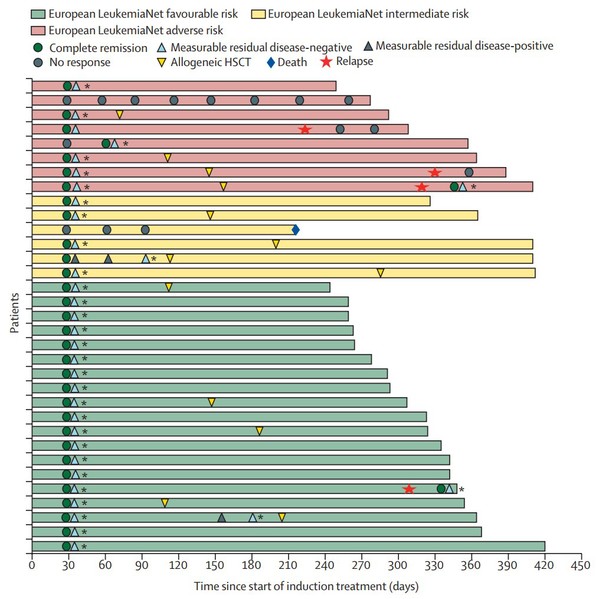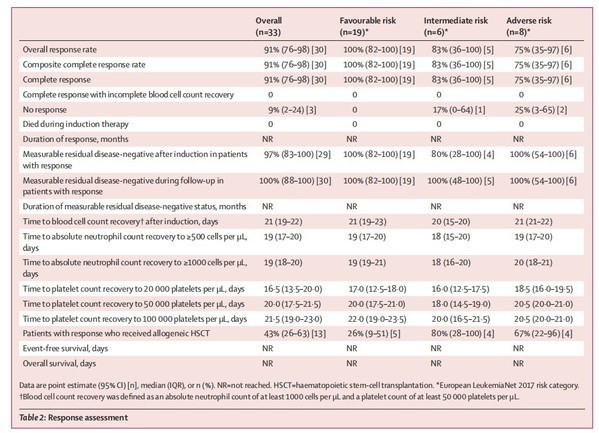Acute myeloid leukaemia (AML) is the most common leukaemia in adults and accounts for about 80% of all cases. DA regimen is the standard induction regimen for adult AML, consisting of daunorubicin and cytarabine, also known as the 3+7 regimen. However, only 60-80% patients with acute myeloid leukaemia achieve complete remission with the DA regimen and long-term (5-year) overall survival in adults is less than 50% in most clinical trials. Novel therapeutic regimens with higher complete remission rates and greater survival benefits are urgently needed.
On May 2nd, the research team led by Prof. JIN Jie and the team led by Prof. ZHU Hong-Hu from the First Affiliated Hospital, Zhejiang University School of Medicine, published an article entitled "Venetoclax plus 3 + 7 daunorubicin and cytarabine chemotherapy as first-line treatment for adults with acute myeloid leukaemia: a multicentre, single-arm, phase 2 trial" in Lancet Haematology. This study aimed to evaluate the efficacy and safety of veneclax combined with the 3+7 regimen (DAV regimen) in treatment-naive adult AML patients.
It showed that the DAV regimen achieved a CR rate of up to 91% after one course of induction therapy. The DAV regimen was also associated with deep remission, with the measurable residual disease negative rate as high as 97%. The DAV regimen was associated with rapid recovery from myelosuppression, with a median recovery time of 21 days after induction. In addition, 97% of patients who achieved a CR remained MRD-negative until the last follow-up. The depth of remission with DAV regimens may also potentially improve survival outcomes in AML patients. Therefore, DAV regimen is an effective induction therapy regimen for newly diagnosed adult AML patients, which can achieve higher and deeper remission, and is well tolerated by patients. The results of this study will provide the evidence for the application of DAV regimen in newly diagnosed adult AML patients.

Fig1. Swimmer plot of dynamic response assessment

Table1: Response assessment
This study is an important contribution to the field, showing a safe strategy to incorporate venetoclax into the most common induction regimen used to treat newly diagnosed acute myeloid leukaemia internationally. DAV regimen showed a high rate of complete remission and measurable residual disease-negativity, and might be considered as an optimal induction treatment in de novo acute myeloid leukaemia.
Meanwhile, the encouraging results of this phase 2 study will be further validated by the same group's ongoing randomized controlled trial comparing DAV and DA regimens in newly diagnosed adult AML patients (ChiCTR2100045780).
Prof. Kieran D Sahasrabudhe from The Ohio State University Comprehensive Cancer Center give the comments in the journal LancetHaematology that "WANG Huafeng and colleagues report their findings from, to our knowledge, the first published phase 2 study of venetoclax combined with the 3+7 daunorubicin and cytarabine induction regimen. " and "The study by Wang and colleagues shows favourable response rates, a high rate of measurable residual disease-negativity among patients with response favourable survival data, and manageable adverse effects with venetoclax plus 3 + 7 daunorubicin and cytarabine chemotherapy. "
Source: The First Affiliated Hospital, Zhejiang University School of Medicine






